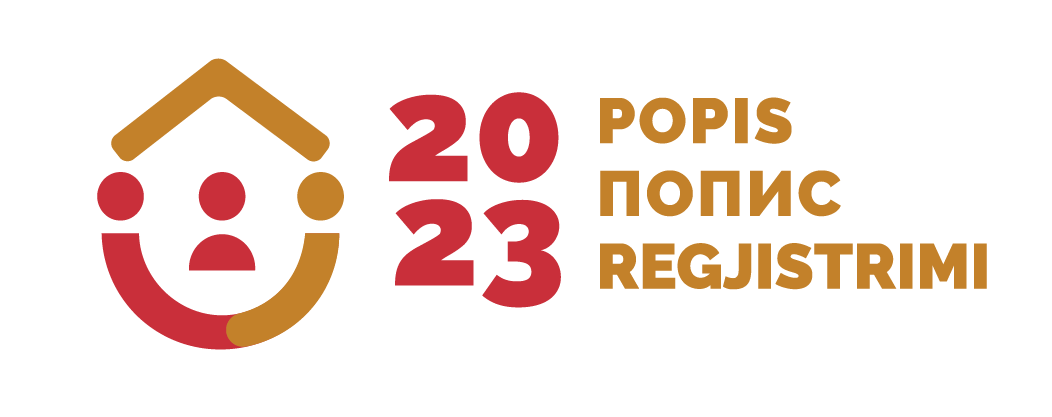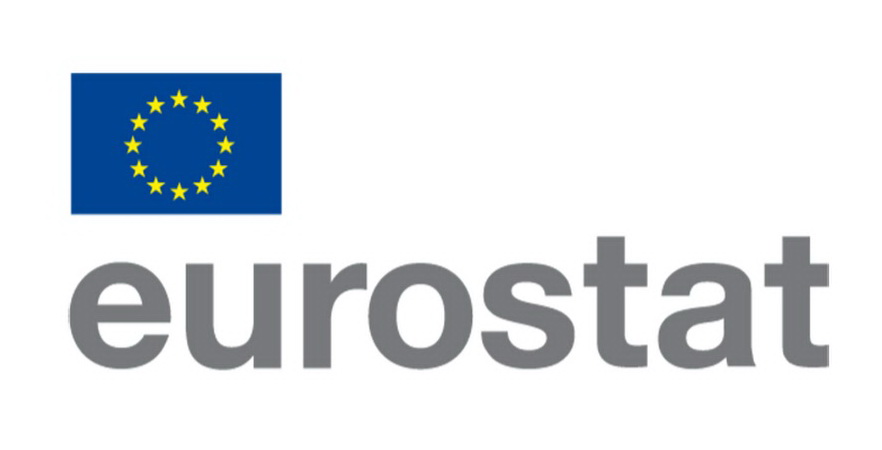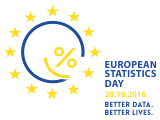| Category: |
Demographic and social statistics |
| Area: |
Education |
| Survey / data collection: |
Enrollment at faculty |
Note: For any question on metadata, please contact MONSTAT metadata support.
| 1. Contact Vrh |
| 1.1. Contact organization: |
Statistical Office of Montenegro - MONSTAT |
| 1.2. Contact organization unit: |
Department for Education, Culture and Justice |
| 1.2. Contact organization unit: |
IV Proleterske 2, 81000 Podgorica, Montenegro |
| 2. Metadata update Top |
| 2.1. Metadata last certified: | |
| 2.2. Metadata last posted: | 29 December 2023 |
| 2.3. Metadata last update: | 29.09.2020. |
| 3. Statistical presentation Top |
| 3.1. Data description: | Data on enrolled students are a result of regular statistical surveys obtained by two ways: a part of data via individual statistical forms, and a part via administrative way (from all accredited higher education institutions in Montenegro. |
| 3.2. Classification system: | National Classification of Education (harmonized with the International Standard Classification of Education - ISCED 2011). |
| 3.3. Sector coverage: | Education sector. |
3.4. Statistical concepts and
definitions: | Higher education is provided by universities and higher education institutions that are licensed and accredited in accordance with the Law on Higher Education. Higher education is acquired in Montenegro at universities and other institutions, which can be established as public and private. The University realizes its activity through: faculties, art academies, institutes and colleges, as organizational units.
The University is an autonomous institution that, in carrying out its activities, unifies educational, scientific and research and artistic work as parts of a unique higher education process.
The Faculty is a scientific-teaching higher education institution that develops scientific-research work as the basis of teaching activity.
Faculty of Arts and Academy is a teaching and art institution of higher education that develops artistic creativity, scientific research work and performs teaching in appropriate fields.
Judicial program is the basic unit for classification of higher education with defined structure and number of ECTS credits which provide the individual with the learning outcomes necessary for gaining knowledge, skills and competences for the field of work from the level of higher education defined in the national framework of qualifications and issuing a diploma.
The status of the student is obtained by enrolling in the appropriate study program.
A student can have a status of a budget funded or self-financing student.
Study programs are divided into study years and semesters.
The study year is organized in two semesters: winter and summer.
Basic studies in Montenegro are organized and implemented in accordance with the study rules based on the European Credit Transfer System (ECTS) and the principles of the Bologna Declaration, implemented as applied or academic.
Basic studies in the applied study programs for acquiring the diploma of applied basic studies last for three study years (180 ECTS credits).
Basic studies at academic study programs for acquiring a diploma of academic basic studies last for at least three academic years, ie at least 180 ECTS credits, or up to the number of credits envisaged for the enrolled study program. The new system contains all elements harmonized with European standards, while retaining, where this proved necessary, and the traditional four-year level of higher education (240 ECTS credits).
Medical studies last 6 (360 ECTS credits), and dentistry and pharmacy for 5 years (300 ECTS credits). |
| 3.5. Statistical unit: | Reporting units are all higher education institutions established or conducting classes in Montenegro, regardless of their status, established in accordance with the Law on Higher Education (Official Gazette of Montenegro No 044/14 of 21.10.2014, 052/14 of 16.12.2014, 047/15 of 18.08.2015, 040/16 of 30.06.2016, 042/17 of 30.06.2017, 071/17 of 31.10.2017, 055/18 of 01.08.2018, 003/19 of 15.01.2019, 017/19 of 19.03.2019). |
| 3.6. Statistical population: | Enrolled undergraduate students (winter semester of the academic year), not including students who have acquired the status of an apsolvent. |
| 3.7. Reference area: | Montenegro |
| 3.8. Time coverage: | The survey results have been regularly published in the Statistical Yearbook of Montenegro from 1962. |
| 3.9. Base period: | Not relevant. |
| 6. Institutional mandate Top |
6.1. Legal acts and other
agreements: | The Law on Official Statistics and Official Statistical System (Official Gazette of Montenegro No 18/12 and 47/19) defines provisions for collection, processing, and dissemination of data. The Law provides to the Statistical Office legal powers to collect and access the data necessary for the implementation of Programme and Annual Plan. The Law gives a priority to the use of administrative data and right of access to individual data that are a result of survey of other official statistical producers. As an annex to legal provisions, Statistical Office has signed several memoranda on cooperation with administrative data providers. |
| 6.2. Data sharing: | Signed agreement on cooperation with the official statistical producers:
1. Customs Administration
2. Tax Administration
3. Ministry of Finance
4. Central Bank of Montenegro
5. Trilateral agreement (MONSTAT, Ministry of Finance, and Central Bank of Montenegro)
International institutions:
1. EUROSTAT
2. UN organizations
3. IMF
4. World Bank |
| 7. Confidentiality Top |
| 7.1. Confidentiality - policy: | Articles 53-60 of the Law on Official Statistics and Official Statistical System (Official Gazette of Montenegro No 18/12 and 47/19) provide a framework for protection, use, and transmission of confidential data. MONSTAT has produced two comprehensive rulebooks that cover the procedures for individual data protection as well as keeping individual records. With purpose of the meeting legal framework on functioning of security system and statistical confidentiality there was adopted the Rulebook on Keeping Statistical Data by which Manner, Time, Technical Conditions and Organization of Statistical Data Storage to Prevent Their Destroying, Misappropriation, and Unauthorized Use is Regulated as well as the Rulebook on Contents and Manner of Keeping Records on Users of Individual Statistical Data by which contents and manner of keeping records on users of individual statistical data is regular.
Pursuant to the Article 59, an access to the confidential data is limited to persons performing duties and tasks of official statistical producer and up to the stage the data are necessary for official statistical production. Persons that performs duties and tasks within official statistical producers must sign the statement on respecting the principle of confidentiality.
Law on Official Statistics and Official Statistical System is aligned with the Regulation No 223/2009 and the Regulation (EU) 2015/759 from 29 April 2015 that also regulate confidentiality provisions.
The Government of Montenegro adopted the Statement on Commitment of Confidence in Official Statistics (Commitment of Confidence). |
7.2. Confidentiality - data
treatment: | Individual information is an official secret. The data is expressed in an aggregated form. Access to confidential data of official statistics is limited to persons who perform tasks with the official statistics producer and to the extent that these data are necessary for the production of official statistics.
Data is published as aggregated without an identifier. The rule of access to micro data is defined in Articles 58 and 59 of the Law on Official Statistics and the System of Official Statistics. |
| 8. Release policy Top |
| 8.1. Release calendar: | The Law on Official Statistics and Official Statistical System (Official Gazette of Montenegro No 18/12 and 47/19) stipulates that official statistical producers prepare, update, and publish Statistical Release Calendar. It is published on the website of Statistical Office not later than 20 December for the next year, for all official statistical producers that includes date of releasing statistical data. Any change in date of releasing in the Calendar is published in advance in accordance with the Procedure on Unplanned Revisions. |
| 8.2. Release calendar - access: | http://www.monstat.org/eng/page.php?id=12&pageid=12 |
| 8.3. User access: | General aim of official statistical producer is to meet the needs of users, and to make an access to statistical data to users in an understandable manner, simultaneously and under the same conditions. Statistical Office is obliged to produce and disseminate official statistics in objective, transparent and professional manner, so that all users are equally treated. |
| 10. Accessibility and clarity Top |
| 10.1. News release: | The release is published annually and is available on
http://monstat.org/eng/page.php?id=295&pageid=75 |
| 10.2. Publications: | Statistical Office publishes the following regular publications: 1. Statistical Yearbook, 2. Montenegro in figures, 3. Monthly statistical review. In addition to the above regular ones, Statistical Office publishes also additionally publications. Some of the most important additional publications are as it follows: 1. Women and Men in Montenegro, 2. The most often used statistical data All publication published by Statistical Office are available at the following link: http://monstat.org/eng/publikacije.php |
| 10.3. Online database: | Not available. |
| 10.4. Micro-data access: | The Law on Official Statistics and Official Statistical System (Official Gazette of Montenegro No 18/12 and 47/19) regulates rules under which external users can obtain an access to individual data for needs of research. Article 58 defines types of scientific and research organizations that can obtain such data. Providing individual data without identifier is possible only upon a written request of scientific and research institutions, with purpose of performing scientific and research activities as well as international statistical organizations and statistical producers from other countries.
Research entity signs the agreement with Statistical Office, and it signs the statement on respecting the confidentiality principle.
Official statistical producers keeps a separate records on users and purpose of using the statistical data given to these users. |
| 10.5. Other: | Not relevant. |
10.6. Documentation on methodology:
domain: | The methodological guide for higher education is available on the Monstat website: http://www.monstat.org/userfiles/file/Obrazovanje/metodologije/metodolsko%20uputstvo%20-%20%20visoko%20obrazovanje(1).pdf |
| 10.7. Quality documentation: | The Law on Official Statistics and the Official Statistical System ("Official Gazette of Montenegro" No. 18/12 and 47/19) defines the commitment to quality, which ensures that producers of official statistics in Montenegro work and cooperate in accordance with international principles of quality of the statistical system.
In accordance with the ESS Quality Declaration, Article 338 of the Treaty on the Functioning of the EU, Regulations 759/2015 and 223/2009 and the European Statistics Code of Practice, the following documents are adopted:
1. Quality Strategy of the Statistical Office
2. Guide for the implementation of the Quality Strategy in the Statistical Office;
3. Implementation plan |
| 11. Quality management Top |
| 11.1. Quality assurance: | Statistical Office has chosen the implementation of elements of TQM (Total Quality Management) model that foster development and improvement of functioning of:
- Institution,
- Official statistical result production, and
- Individual.
Within middle-term deadline, Statistical Office has chosen the TQM implementation through the following objectives:
1. Strong commitment to users and other interested parties,
2. Quality statistical processes and products,
3. Professional orientation of staff members,
4. Constant improvements,
5. Reduction of overburden of reporting units. |
| 11.2. Quality assesment: | The quality was monitored through all stages of production of data, from the responsible statistician, in accordance with the specifics of the concrete research. Data collection and processing is the subject of this control. Within the framework of the organization of statistical research, certain quality aspects are part of the preparedness of the staff involved and the production of statistics. |
| 12. Relevance Top |
| 12.1. User needs: | International users:
- Eurostat,
- World Bank,
- UN organizations,
- International Monetary Fund
National users:
- Ministries and other public administration bodies,
-Local government, and
-Other local government bodies.
- Central bank,
- Non-governmental organizations,
- Students,
-Researchers,
- Media. |
| 12.2. User satisfaction: | The Statistical Office has adopted the Quality Management Strategy, the Guidebook to the Implementation of the Quality Management Strategy, as well as the Plan for the Implementation of the Quality Policy.
In order to measure the degree to which fulfills obligations towards users and within the new quality policy, the Statistical Office conducted User satisfaction survey.
The results of the survey are available on the Statistical Office website, link: http://monstat.org/uploads/files/2.%20Izvjestaj%20o%20zadovoljstvu%20korisnika%20ENG%20(Autosaved).pdf |
| 12.3. Completeness: | In the coming period it is necessary to improve the methodology and existing questionnaires used in the field of higher education through the application of the methodology and regulations prescribed by EUROSTAT, UNESCO and OECD, in order to ensure full international comparability. If it is possible to transfer to administrative sources of data. |
| 13. Accuracy and reliability Top |
| 13.1. Overall accuracy: | The survey is conducted on a full coverage of reporting units. Reporting units are higher education institutions in Montenegro which possess the data necessary for this survey. This way provides a high accuracy assessment. |
| 13.2. Sampling error: | Sample errors are not relevant, since this statistical survey is done on a full-scale basis. |
| 13.3. Non-sampling error: | Not relevant. Since the survey in the field of higher education is based on a full coverage, coverage errors are not discovered. |
| 14. Timeliness and punctuality Top |
| 14.1. Timeliness: | The data are published in accordance with the Annual Plan of Statistical Surveys and the Statistical Release Calendar. The data shall be published on the date specified in the Statistical Release Calendar in the form of a regular annual release.
Statistical Release Calendar is available on the link:http://monstat.org/eng/page.php?id=12&pageid=12 |
| 14.2. Punctuality: | No deviation between the announced date in the Statistical Release Calendar and the actual date of publication. |
| 15. Coherence and Comparability Top |
15.1. Comparability -
geographical: | Data on students enrolled in basic studies in Montenegro are comparable with all countries using the International Standard Classification of Education - ISCED 2011. |
| 15.2. Comparability over time: | Data on enrolled students in basic studies, in Montenegro, are available from the academic year 1963/1964. year. Data are time-comparable. There have been no interruptions in series since the start of data collection for this statistical survey. |
15.3. Coherence - cross
domain: | Not relevant. |
| 15.4. Coherence - internal: | Not relevant. |
| 17. Data revision Top |
| 17.1. Data revision - policy: | Statistical Office has adopted the revision policy and it is available on the website http://www.monstat.org/eng/page.php?id=1411&pageid=1411 |
| 17.2. Data revision - practice: | There was no data revision. Not applicable. |
| 18. Statistical processing Top |
| 18.1. Source data: | All higher education institutions in the territory of Montenegro that have a license and accreditation for their classes, regardless of their status. |
18.2. Frequency of data
collection: | The data are collected at the annual level. |
| 18.3. Data collection: | Data is collected in a combination. From a number of reporting units, data is collected through a statistical questionnaire by a reporting method and partly by administrative means. |
| 18.6. Adjustment: | Not relevant. |







